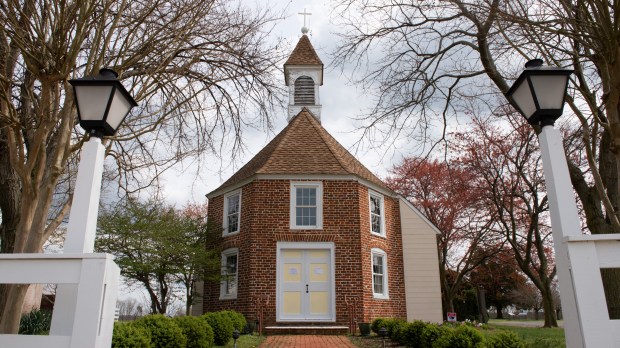It is commonplace for concerned Catholics to bemoan the floundering state of the Church in the contemporary United States. Some call for Catholics to unite as a people, to foster a distinct Catholic culture, indeed, even to be “countercultural.”
Inspiring as these rallying cries may be, they raise a question: What makes a culture “Catholic”? Many advocates of a distinctly Catholic culture look to philosophy, art, literature and liturgy for inspiration; most insist above all on theological orthodoxy as the litmus test for Catholic culture. These are necessary, but hardly sufficient; they point to a somewhat narrow conception of culture, a kind of Catholic version of the Victorian notion of culture as high art, the “best that has been thought and said.”
Another, broader conception, coming out of modern anthropology, understands culture as “a whole way of life.”
To understand this notion of Catholic culture, we need to draw inspiration from history. In my recent book, American Pilgrimage: A Historical Journey Through Catholic Life in a New World, I have approached the history of the Church in North America by looking at the interplay between faith and culture from the first Spanish settlements to our own time.
Cultural center: The local parish
At the heart of this story lies the life of faith lived out in the local parish. Far from simply a sacrament dispensary, these parishes were the cultural centers for generations of Catholics. The people of these parishes often shared a common ethnicity; even more often, they shared a local identity rooted in place, the strong, sometimes even tribal, bonds of neighborhood.
European immigrants founded such parishes in the Northeast and Midwest, but this model of parish life shaped the faith of other groups as well. The story of the free people of color in New Orleans provides one example of the wide reach of this model. Refugees from the 1793 revolution in French Catholic Haiti, these free Black Catholics settled in the French Quarter of New Orleans and attended Mass at St. Louis Cathedral. This influx of immigrants, however, brought overcrowding to the densely populated Quarter and a need to expand the city limits to accommodate the growing population. New Orleans, like most other large American cities, expanded through the sale and subdivision of farms surrounding the original settlement. The free people of color in the overcrowded French Quarter scooped up much of the newly available property, creating the neighborhood known today as Faubourg Tremé.
Firsts for the American Black community
For the next three decades, Black Catholics would make the long trek to attend Sunday Mass at the Cathedral in the old Quarter. During this period, a dedicated group of lay and religious leaders built an impressive institutional infrastructure to provide for the needs of the community. The institution-building began in the sphere of education; the Faubourg Tremé neighborhood would become the home of the first “colored” Catholic elementary school in the United States. These efforts were particularly impressive for the cross-racial alliances they forged. White French women such as Marthe Fortiere worked together with free people of color such as Henriette Delille in a spirit of mutuality and respect well beyond even the comparatively liberal norms of New Orleans.
Having demonstrated their commitment to community building, free Black Catholics decided it was time to have their own parish church. Led by a young activist, Louis Barthelemy Rey, a group of lay people presented their case, supported by demographic data, to Bishop Antoine Blanc; persuaded by the clarity of their arguments and the sincerity of their faith, Bishop Blanc gave his approval to the founding of a new parish. At the grass-roots level, the free people of color of Faubourg Tremé initiated a fund-raising drive to finance the construction; despite their heroic efforts, Bishop Blanc needed to donate 25,000 from the diocesan treasury to complete the church.
Construction began on November 14, 1841; the church—named St. Augustine’s after the great African bishop of Hippo—was formally dedicated on October 9, 1842, the first canonical parish founded by free people of color in the United States.
St. Augustine’s owes it birth to both the faith of its founders and the economic vitality and dynamism of New Orleans in the 1840s. In our own time, the shuttered windows of old parish churches reflect demographic and economic shifts as much as any general decline in Catholicism; there are more Catholics in American today than there were in 1970. Still, the increasing mobility of all Americans undermines the ability of Catholics to develop a stable parish life. The achievement of a meaningful Catholic culture requires rootedness in place, over time.
~
Christopher Shannon is an Associate Professor of History at Christendom College. He is the author of several works of American cultural and intellectual history, including, with Christopher O. Blum, The Past as Pilgrimage: Narrative, Tradition and the Renewal of Catholic History. His latest book is American Pilgrimage: A Historical Journey Through Catholic Life in a New World.

